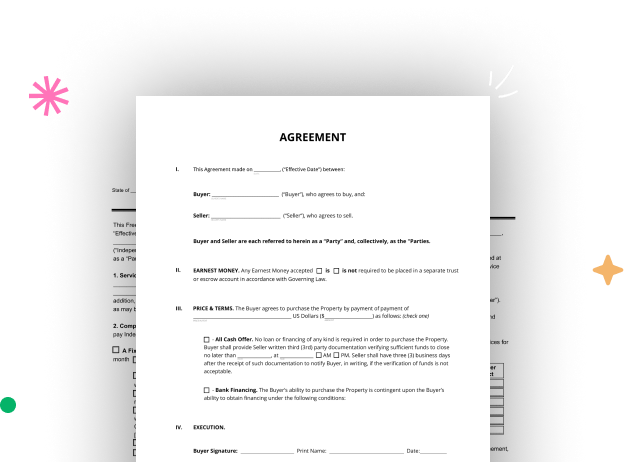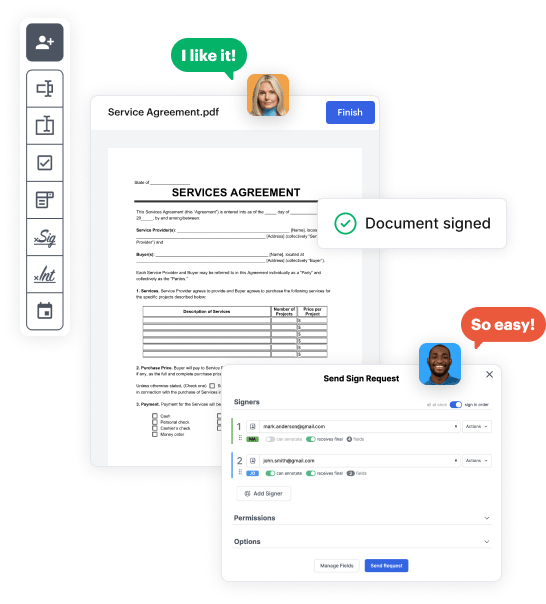

Go to the DocHub website and sign up for the free trial. This gives you access to every feature you’ll need to build your Timber Sale Legal Document without any upfront cost.
Log in to your DocHub account and navigate to the dashboard.
Click New Document in your dashboard, and select Create Blank Document to create your Timber Sale Legal Document from the ground up.
Insert different elements such as text boxes, radio buttons, icons, signatures, etc. Arrange these elements to suit the layout of your document and assign them to recipients if needed.
Organize your document easily by adding, moving, removing, or merging pages with just a few clicks.
Transform your freshly designed form into a template if you need to send many copies of the same document repeatedly.
Send the form via email, share a public link, or even post it online if you aim to collect responses from a broader audience.